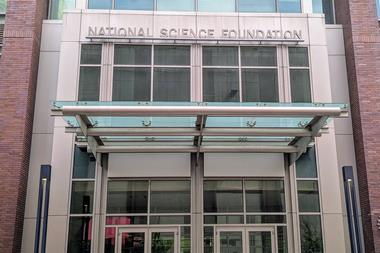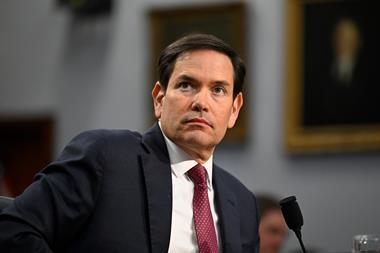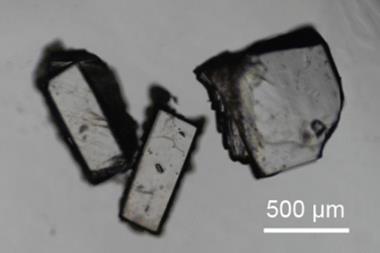President Trump’s budgetary blueprint for the 2026 fiscal year, released on 2 May, threatens to devastate the budgets of major research agencies in the US, contributing to mounting alarm among the nation’s academic research and science advocacy groups. These groups, including the American Chemical Society (ACS), are appealing to Congress to intervene, but the situation looks bleak.
The so-called ‘skinny budget’ would slash funding for the National Science Foundation (NSF), which supports fundamental research and education in non-medical fields of science and engineering like chemistry, by about 55%. The NSF distributes around $9 billion (£6.8 billion) to fundamental science every year. The president’s proposal would also cut funding for the National Institutes of Health (NIH) – the world’s largest biomedical research funder – by about 40% from $48.5 billion to about $27 billion.
Nasa would receive a 24% cut, including a 47% reduction to its science budget, and the National Institute of Standards and Technology – a small agency that advances measurement science, standards and technology – would see its funding fall by about $325 million, for an overall cut of about 25%. The Department of Energy’s (DOE) Office of Science, which is the US’s largest federal sponsor of basic research in the physical sciences and a major supporter of research in fields like materials science and chemistry, is also in the red but would fare better – losing $1.1 billion from its $8.8 billion budget.
Meanwhile, funding for the Environment Protection Agency (EPA) would decrease by 54% overall, or $5 billion, and the agency’s Office of Research and Development appears poised to be axed, although the agency plans to move some scientists that work there to other divisions like the Office of Chemical Safety and Pollution Prevention. That office is set to gain ‘more than 130 scientific, bioinformatic, technical and information technology experts’, the EPA has announced.
These numbers have not been well received in the research community. The ACS is extremely concerned about the proposed reductions, saying cuts of the scale proposed to the NSF and NIH, for example, could have ‘very adverse effects on US research, derail innovation and threaten the pipeline of future scientists’. The organisation plans to continue advocating to Congress for strong, sustained investment in science.
The American Association for the Advancement of Science (AAAS) is also worried. ‘Make no mistake, if Congress enacts the president’s skinny budget, the consequences for the future of our nation would be catastrophic,’ warned Sudip Parikh, the AAAS’s chief executive. ‘The United States will no longer be in the global race for R&D leadership – we will have lost it.’
The US is at a crossroads and ‘it is up to our federal lawmakers to reaffirm their long-standing bipartisan support for science and technology investment by rejecting this budget’, concluded Parikh, who served as science adviser to the Republican leadership of the Senate Appropriations Committee and was responsible for negotiating the budgets of the NIH and several other science agencies from 2001 to 2009.
Mark Becker, president of the Association of Public and Land-grant Universities, also agrees. ‘Congressional leadership is needed to reject misguided cuts to higher education and research, which are major drivers of American productivity, job creation and innovation and instead redouble investment in widely recognised sources of American global economic leadership,’ he stated.
Other organisations, including the Association of American Universities and the American Physical Society (APS), expressed similar sentiments and urged Congress to reject Trump’s proposed cuts to science and instead prioritise robust and sustainable funding for the federal science agencies.
‘China already celebrates taking the lead in chemistry and other physical sciences, at least by some measures,’ Neal Lane, a physicist who served as science adviser to former president Bill Clinton and previously as director of the NSF, tells Chemistry World. ‘With this budget, the administration seems to be sending a message that America really doesn’t care that much about science.’
The president’s full budget request for fiscal year 2026, which begins on 1 October and is expected to be released shortly, will include additional details. That document will then head to both chambers of Congress for deliberation and decisions about final funding levels.
During the first Trump administration, Congress repeatedly prevented significant cuts to key research agencies, but experts have said that such intervention by Capitol Hill seems much less likely this time around. This is because the current executive branch appears to have taken control of the purse strings by acting unilaterally to delay or cancel congressionally approved funding for research projects.

















No comments yet